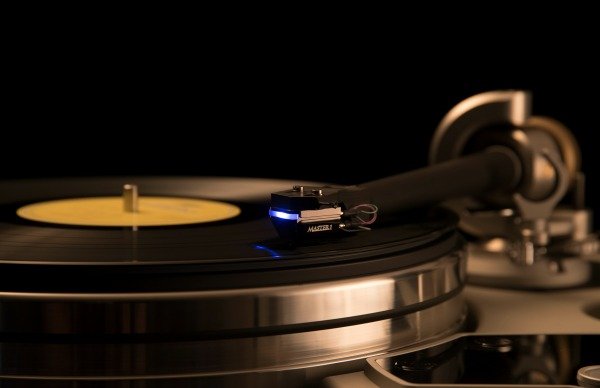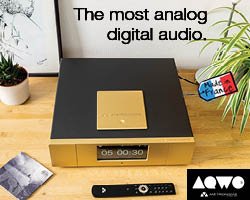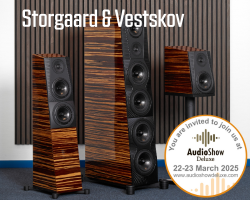TITANIC AUDIO MODEL A PHONO CARTRIDGE REVIEW
Alan McIntosh avoids the inevitable iceberg puns and takes a listen to the Titanic Audio Model A cartridge.
Heresy : belief or opinion opposed to a generally accepted view.
HiFi is full of doctrine and therefore heresy does arise. When it comes to vinyl playback opinions are almost as vehement and wide-ranging as the dreaded cable debates and of course, one such accepted wisdom for many is that to really get the most of your vinyl you need the finest line profile possible on your cart. I myself run a very satisfying Hana ML (Micro Line) on one arm, and an Audio Technica with the Shibata profile on another.
Heresy, of course, also often comes hand in hand with true innovation and enlightenment – does anyone remember a guy called Galileo? More on that later.
Bear with me now but “What happened to the Iceberg?” (Oh, there it is – Ed). This of course is a Titanic reference, that leviathan of the waves scuppered by a large ice cube. Built in the legendary Belfast shipyards, it’s a little unfair that we focus on its perceived failings and not its engineering wonder – or that of its sister ships that carved paths across the oceans for decades. Continuing that tradition of Northern Irish engineering and design, and with a very large nod to its namesake, Titanic Audio is now offering a range of innovative cartridges into the market, the entry one being the Model A which I have in for review.
BUILD AND FEATURES
The Titanic range comprises 3 cartridge models (A= Acrylic, S=Silver & G=Gold) all hand-made from carefully selected materials in the UK which is a bold economic choice in the current climate and a strong indicator that quality is important to the designers. The Model A arrives in a very cool and expensive-looking hexagonal clear plexiglass type box, mirrored at the base with the cart suspend to allow full view all around before opening. Allen key and fixings, as well as a simple stylus guard, are also provided. Straight away it’s impressive from an aesthetic standpoint and when you then look closely at the cartridge body things take a whole new direction indeed.
The Titanic name is not simply plucked out of the air, the cartridges clearly draw design inspiration from the prow of a ship, with its broad body and bow-shaped point. The UK handmade body is CNC machined from solid acrylic (hence Model A) hung on a carbon fibre frame that is designed to provide exceptional rigidity and improve damping, aluminium cantilever and wound with 0.024mm OFC wiring provided exclusively for Titanic cartridges. Output is a pretty strong 0.35mv and so will match happily with most MC Phono stages at Ω1K and above loading.
The stylus (unusually) sits central rather than forward in the body, which can at first fettle make it feel like it’s hard to see the stylus and therefore align correctly. And setting the cart “prow” so far forward of the arm head just feels…well, a bit wrong. Then you realise the point being very well aligned to the stylus in a way makes it easier to set up relatively quickly, even if you do need to look a bit closer to really align null points if using a set-up device like the Dr Feickert (my tool of choice). Titanic see this approach as key to balancing forces on the stylus and driving it better through grooves. Cueing a record is also super easy with this visual anchor or the cartridge’s “prow”.
This is a light cart at 6.1g and as such did require me to fully remove the extra counterweight on my arm, but soon done and set up to 1.8g tracking and run in for about 16 hours.
LISTENING TO THE TITANIC MODEL A CARTRIDGE
As I sit here listening to “Undercurrent” (Mofi) by Bill Evans & Jim Hall, I’m drifting away on the deft play by Evans across the keys, Halls rippling below on the guitar. I’m struck at how light of touch and nimble the result is – the Titanic evidently moving across the surface without hindrance or reluctance of any sort. I’m captivated by really quite impressive stereo imaging, on par for sure, if not exceeding, that of my reference Hana ML. The tonality and liveliness are equal to it at least. With Dire Straits’ “Love Over Gold” (MoFi) and across the likes of Alan Stewart, Pink Floyd and Wayne Shorter’s “Adams Apple” (Blue Note SRX 2019 ) I’m continually taken with the command and vivacity of this cartridge. Open, and with lovely separation, it’s a joy to listen to – very engaging, very immediate, ever so slightly smooth or glassy, and perhaps a smidge roll off at the very top end (but only ever so slight) – far from dry or clinical, but balanced well across the frequencies, with lovely timbre and sensitivity and as far from fatiguing as I’ve experienced. It’s possible that the Hana produces ever so slightly more raw information at times, but the result is not always a better one. For me, this is a more listenable and (more heresy) “musical” cartridge – its quiver of skills not reliant on one facet of its construction such as stylus profile – which brings me to a glaring gap in my review so far – the stylus.
CONCLUSION
I opened with heresy so let me close there. The stylus Titanic has chosen to marry to their high-quality body, coil, and cantilever, positioned mid mount for balance and in a unique form factor housing is – gasp – conical. I know, everything we think we know says this should not sound so good, but that’s just what it does. And stepping back, why should it not?
In contrast to my reference Hana ML at north of £1000 and with its Micro Line stylus but fairly ubiquitous design of body and windings being comparable to others at it price points with its detail but “sweetness” this Model A at £1750 has chosen to be bold and evolutionary in a field where there is limited departure from accepted wisdom. Built here in UK (with those associated costs), from high quality and innovative materials and designed from the ground up to sit differently, and be shaped differently – the sum of parts being a very different result, but one I very much like.
Titanic advise they chose the stylus profile for its unfussy setup and great tracking –as I flip on Wayne Shorter’s incredible “Night Dreamer” (Blue Note, Music Matters pressing) I have to say it seems to have paid off – and then some. And that’s hard to resolve for many. But it stands. This is, for its price, a superb cartridge and must be on people’s audition list.
One to watch for sure!
AT A GLANCE
Build Quality:
Unquestionably bold and high quality
Some may seek a finer line stylus but try to look past that and take the sum of parts into account as this is breaking the mould aesthetically and more importantly sonically
Sound Quality:
Impressive all around with a lovely and light touch
Agile and deft
Perhaps missing the very last top end, but thoroughly captivating, especially in acoustic realms such as Jazz
Value For Money:
At a reasonable £1750, this is a lot of cartridge and the sound is up to it – very tempting indeed!
We loved:
How it sounds – plain and simple
Innovative design and packaging is very attractive
Price seems solid based on sonic capability and the quality of materials involved
A joy to listen to.
We Didn’t Love So Much:
The body aesthetics could divide at first
Bit of a conundrum to fit at first sight, but soon overcome
Elevator Pitch Review: From the first look, through setting up and listening this is a bold new innovative cartridge, not afraid to challenge the market or Audiophile’s beliefs. The sound is surprisingly engaging and deft in its abilities. Body and stylus may create pause for thought but be bold and have a listen – you will not be disappointed.
Alan McIntosh
SPECIFICATIONS
Type: Stereo MC
Body: CNC Machined Acrylic
Stylus: Conical Jointed-Diamond Stylus
Cantilever: Aluminium
Height: 16mm
Weight: 6.1g
Coil Type: 0.024mm OFC
Output Level: 0.35mV (1KHz, 5cm/S)
Coil Impedance: 7 Ω
Frequency Response: 20-20KHz ±1dB
Load Impedance: >=100Ω
Recommended Tracking Force: 1.8g
Review Equipment: Upgraded Origin Live Calypso Mk4 Turntable, Illustrious Tonearm, Gold Note PH10 Phono Stage/PSU, Hegel H190 Amplification, Amphion Argon 3S. WyWire Blue Interconnects, Tellurium Q Black II Speaker Cable. Hana ML for reference. Solid Steel Speaker stands. Room treatment by GIK Acoustics. Dr Feickert alignment protractor for setup. Titan power across the system.






















































































































































































